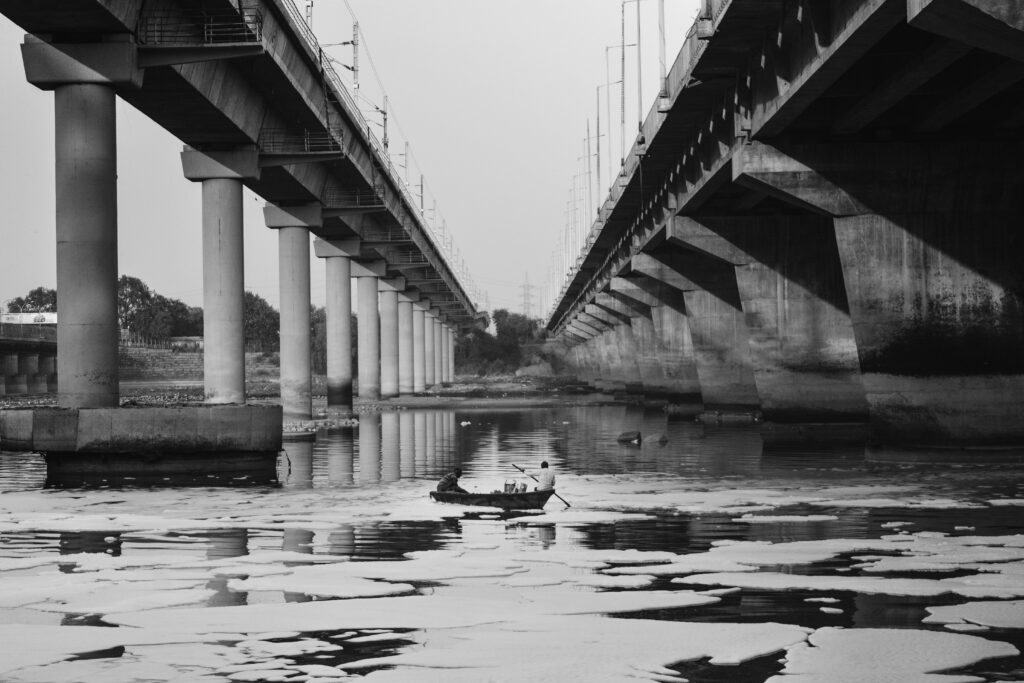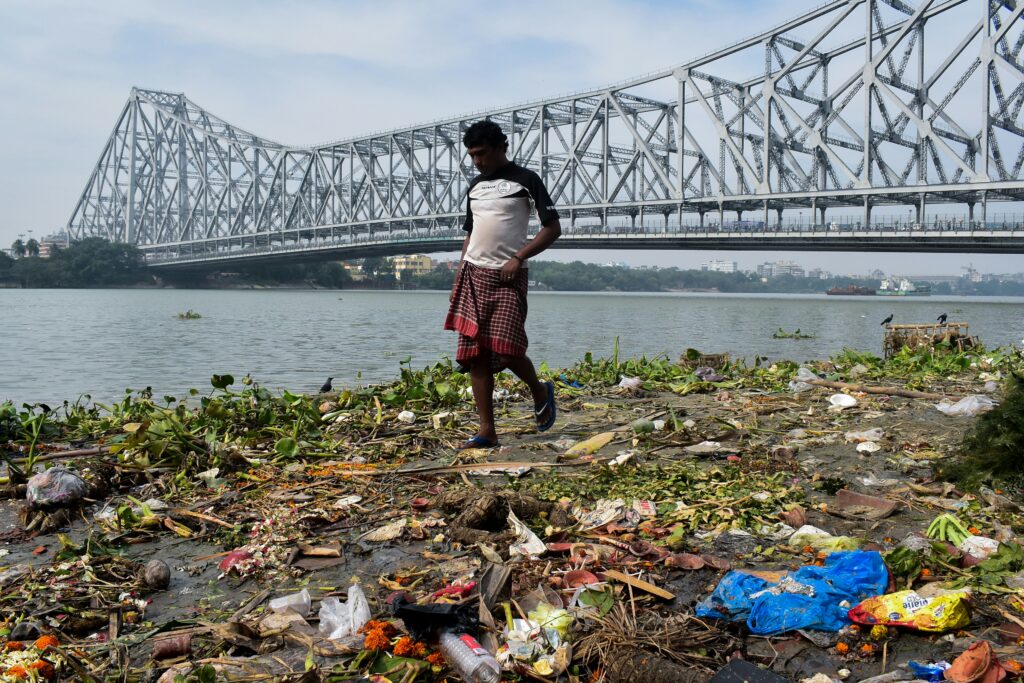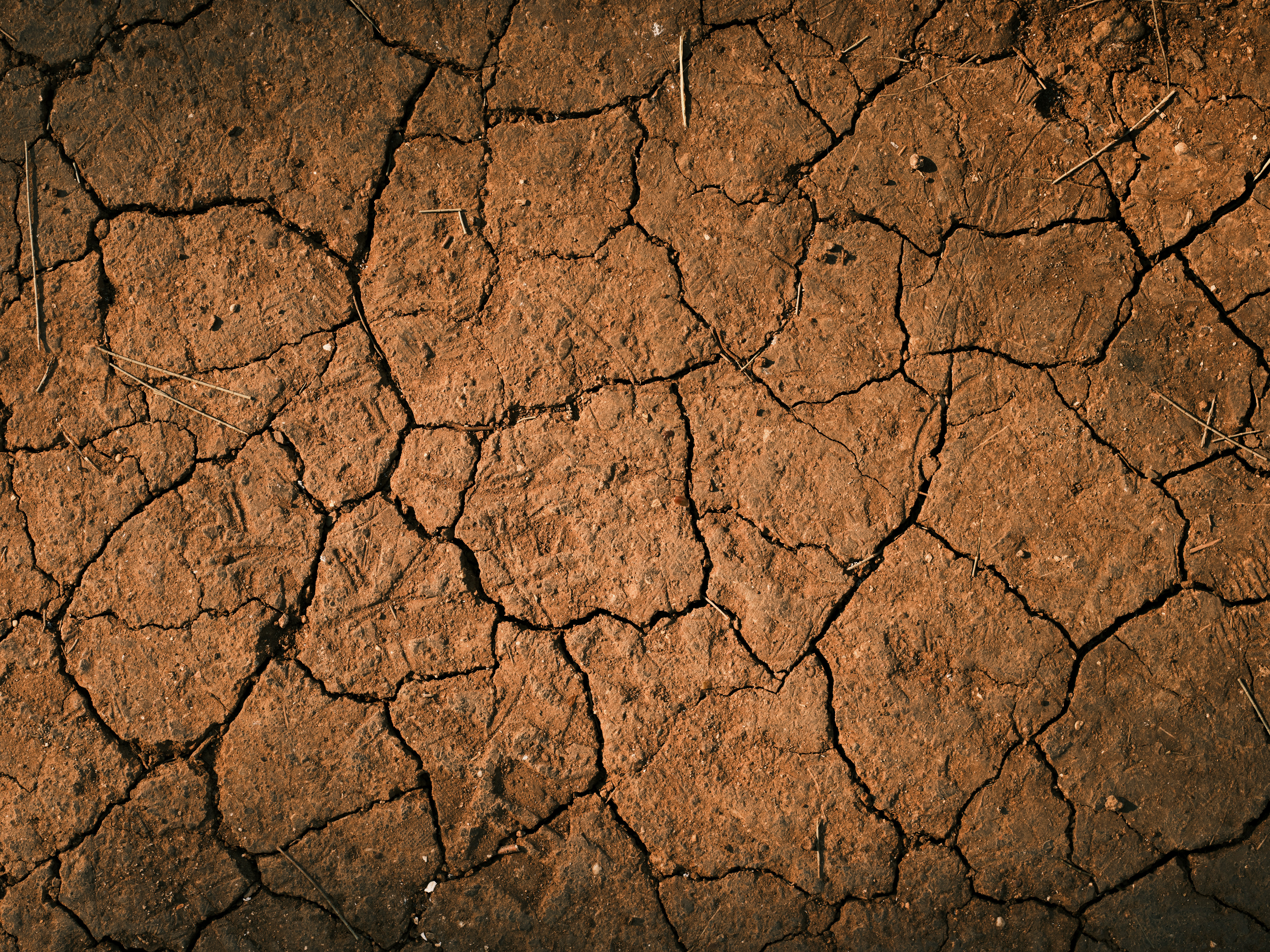Tapping Wastewater to Secure India’s Water Future
Scaling wastewater treatment in India is key to unlocking a sustainable water future, reducing scarcity, and protecting public health.
Wastewater treatment is a stated priority under the NWM – why does India still treat less than half of its sewage, and what systemic gaps persist?
Research from the World Resource Institute indicates that India will be under severe water stress by the end of the decade. The country’s growing population and rapid urbanisation are increasing water demand while generating larger amounts of waste water. To address this, policies like the National Water Mission and the Atal Mission for Rejuvenation and Urban Transformation (AMRUT 2.0) aim to make cities water-secure and self-sufficient, with a large share of urban water needs met through recycling and treating waste water. A process that involves removing contaminants from sewage to make the water safe for reuse or release into the environment, preventing pollution and protecting public health.
Research from the World Resource Institute indicates that India will be under severe water stress by the end of the decade.
However, a 2022 report by the government think tank NITI Aayog revealed that less than a third of urban sewage is treated. Untreated wastewater continues to pollute rivers, lakes, and groundwater, posing serious health risks and harming ecosystems. Many households still depend on septic tanks that are poorly maintained and often leak untreated waste into drains.

Overcoming the gap in wastewater treatment would unlock a vital water supply while alleviating fresh water pollution. But the current gap goes beyond the lack of Sewage Treatment Plants (STPs). Outdated collection systems, insufficient funding for operations and maintenance, unclear responsibilities, and strained municipal finances hinder progress. Even where treatment plants exist, they are frequently underutilised, poorly connected, or lack the power to operate effectively.
These issues are worsened due to a focus on individual plants rather than the entire system. The lack of oversight leads to illegal discharging and untreated sewage polluting water sources. Smaller towns especially struggle with high infrastructure costs and unclear revenue streams, leaving many treatment units non-functional. Additionally, aging infrastructure that combines stormwater with sewage increases load on the system during heavy rains. Addressing these systemic issues is essential to creating a sustainable, effective sanitation system across India.
How can policy frameworks better integrate wastewater reuse into national and state water security strategies?
Since water management is primarily a state responsibility, integrating treated wastewater into water security strategies requires strong commitment at the state level. The first step is for states to recognise treated wastewater as a viable water source and set clear reuse targets aligned to AMRUT 2.0, which aims to meet at least 20% of urban water demand and 40% of industrial water demand through water recycling. These goals must be linked to measurable milestones and regular reporting on actual demand met, rather than just capacity installed.
States need to recognise treated wastewater as a viable water source.
Next, states can mandate the use of recycled water through Recycled Water Purchase Obligations (RWPO), requiring utilities, industries, construction agencies, parks, and new developments to source a portion of their non-potable water needs from treated wastewater. Providing an alternative water source is especially important for industries such as energy production. The World Resource Institute highlights that nearly half of India’s thermal power plants – the country’s primary energy source – experience water stress, leading to shutdowns and energy shortages. Mandates on wastewater usage could be supported with enforceable contracts and financial incentives, particularly in cases were where tariffs do fully not cover treatment and supply costs.

Lastly, India needs to shift from a one-size-fits-all approach to a fit-for-purpose model, where national guidelines clearly define water quality standards for different reuse applications – such as industrial cooling, landscaping, agriculture, groundwater recharge, or environmental flows. Strengthening monitoring and ensuring public transparency will be key to building trust, unlocking demand, and making wastewater fundamental to water security in India.
How can decentralised wastewater treatment systems complement large centralised plants in both urban and rural areas?
Decentralised wastewater treatment (DWWT) systems play a vital role in filling gaps left by large centralised plants, especially in underserved areas. In urban settings, smaller treatment units – such as district-scale, estate, or building-level plants – act like capillaries feeding into the main system. They quickly intercept sewage in low-density or unsewered areas, can be set up rapidly, and later integrated or co-treated with larger plants.
Treating wastewater close to the demand areas – whether for parks, construction sites, industrial cooling, or residential estates – reduces pumping costs and secures reliable water reuse. This also relieves pressure on central systems, making processes more resilient during heavy rains, when water treatment infrastructure is often overloaded.
Decentralised wastewater treatment systems play a vital role in filling gaps left by large centralised plants, especially in underserved areas.
A practical model is the hub-and-spoke approach: the central plant ensures quality control, sludge management, and monitoring, while local systems handle treatment and discharge into reuse points or the main drain. In rural and small-town areas, simple solutions like soak pits or planted filters, along with regular desludging and faecal sludge treatment, offer effective, low-cost, fit-for-purpose options.
To ensure decentralised sewage treatment systems effectively complement large, centralised plants, cities and state need to divide areas that already have sewage systems from those that depend on local systems. They should also map reuse demand before building infrastructure and require buildings to implement dual plumbing systems that separating clean and wastewater. Establishing long-term agreements for operation and maintenance with performance-linked payments, such as consistent treatment quality and reuse will encourage adoption. Tracking progress through citywide monitoring systems ensures accountability and builds confidence in decentralised wastewater treatment options.
How can treated wastewater be positioned as a climate resilience tool, especially in water-scarce regions?
Treated wastewater can be a powerful tool for climate resilience, especially in water-scarce regions of India. Water scarcity is a significant challenge, with many areas facing dwindling surface water sources like rivers and lakes, changing monsoon seasons, and over-extraction of groundwater leading to falling water tables. In such a context, treated wastewater offers a reliable alternative water source for non-potable uses such as irrigation, industrial processes, cooling in power plants, and landscaping. When properly managed and integrated into water planning, it reduces the demand on stressed natural water sources, easing pressure on already overused rivers, lakes, and aquifers.

Embedding treated wastewater use in drought management codes provides a steady, predictable supply of water, even during dry seasons or prolonged drought periods. Practices like groundwater recharge – injecting treated water into underground aquifers – can help store excess water during the rainy season, ensuring availability during droughts and preventing issues like seawater intrusion, where overextraction of groundwater can lead to seawater contaminating freshwater sources in coastal areas.
The effective use of treated wastewater as a climate resilience tool comes down to what I previously mentioned: creating a fit-for-purpose approach. Treatment levels must match specific uses, whether for irrigation, industrial cooling, or environmental benefits.
If you could prioritise three immediate policy or investment shifts to fast-track sewage treatment and reuse, what would they be?
To my mind, three shifts stand out: move from asset creation to outcome delivery, securing demand for recycled water, and closing the collection gap.
First, we must pay for outcomes, not assets. Grants should be converted into performance-linked payments per verified kilolitre treated and reused, with bonuses for compliance uptime and energy efficiency. Standardising contracts to ensure sustainable funding for operations and maintenance is vital.
Secondly, states should guarantee demand. This can be done through implementing obligations for recycled water use across industrial areas and large developments. Government co-funding of infrastructural needs like upgrading treatment facilities will produce higher-quality recycled water through tertiary treatment, while installing specialised piping systems ensure treated water distribution for uses like irrigation or industrial processes.
By moving towards outcome-based approaches and scaling wastewater reuse, India can make significant progress in achieving water security and building healthy, resilient urban and rural communities.
Lastly, expanding the collection wastewater network to ensure citywide sanitation is crucial. This means funding the connection of households to safe sewage systems, preventing untreated sewage discharges into drains and aquifers, and mandating regular desludging with supportive infrastructure like faecal sludge treatment plants or co-treatment bays at city sewage treatment plants. In areas without sewerage, local treatment facilities can be used to treat wastewater close to where it is generated. New rules requiring buildings to have dual plumbing systems will support efficient and safe sewage management.
Implementing these changes will directly support India’s policy goals of ensuring sustainable water management and expanding access to safe sanitation for all citizens. By moving towards outcome-based approaches and scaling wastewater reuse, India can make significant progress in achieving water security and building healthy, resilient urban and rural communities.
